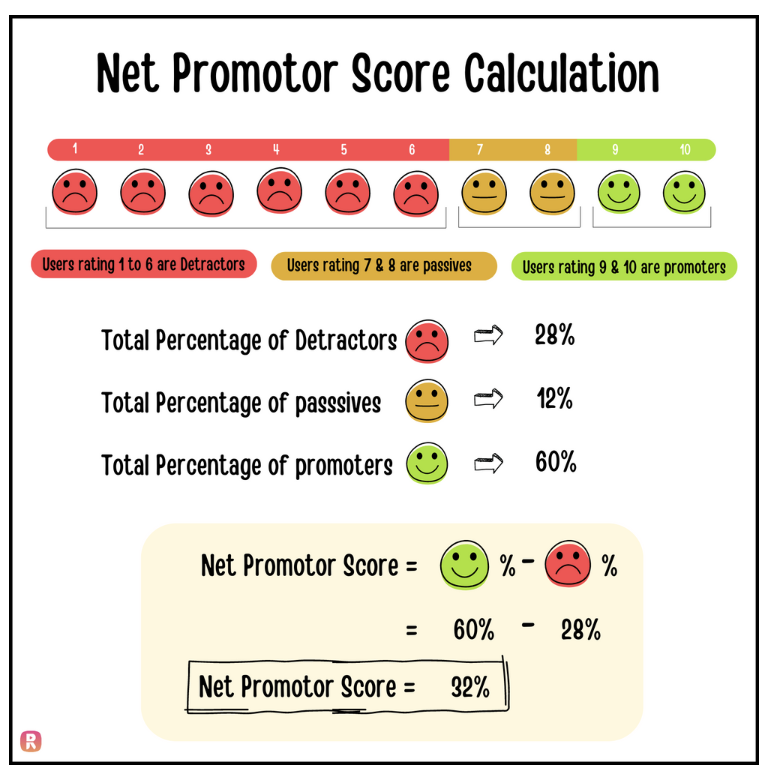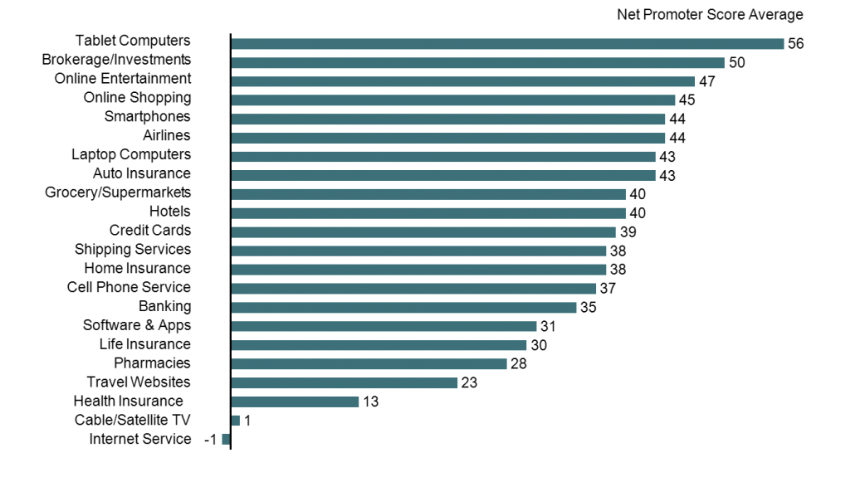How to Use an NPS Calculator to Measure Customer Loyalty
In today's competitive business landscape, understanding and quantifying customer loyalty is more crucial than ever. That's where the Net Promoter Score (NPS) comes in — a powerful metric that gauges customer satisfaction and predicts business growth. An NPS calculator is an indispensable tool for businesses looking to streamline the process of measuring and analyzing customer loyalty. By leveraging an NPS calculator, companies can efficiently track customer sentiment, identify areas for improvement, and make data-driven decisions to enhance the customer experience.
What is an NPS Calculator?
- Definition: An NPS calculator is a tool used to measure customer loyalty and satisfaction based on the Net Promoter Score metric. It simplifies calculating and interpreting NPS data, enabling businesses to gauge customer sentiment effectively.
- Historical Context: The concept of Net Promoter Score was introduced by Bain Company in 2003. Since then, it has become a widely adopted standard for measuring customer loyalty and predicting business growth.
- Use Cases: NPS calculators are extensively used across various industries, including retail, SaaS, and healthcare. These tools help businesses assess customer sentiment, identify promoters and detractors, and implement targeted strategies to improve service delivery and customer satisfaction.
- Benefits: An NPS calculator offers a simple, efficient way to track customer loyalty trends. By providing actionable insights into customer sentiment, these tools empower businesses to prioritize customer-centric strategies, reduce churn, and foster long-term growth.

How to Calculate NPS?
Calculating your Net Promoter Score is a straightforward process that can be broken down into four key steps:
- Step 1: Collect Responses
- Send out an NPS survey asking customers how likely they are to recommend your product or service on a scale of 0-10.
- Ensure your survey reaches a representative sample of your customer base to obtain accurate results.
- Consider streamlining the process using an NPS calculator with built-in survey distribution features.
- Step 2: Categorize Respondents
- Group responses into three categories based on the scores provided:some text
- Promoters (9-10): Loyal enthusiasts will likely recommend your brand to others.
- Passives (7-8): Satisfied but unenthusiastic customers who may be vulnerable to competitive offerings.
- Detractors (0-6): Unhappy customers who may spread negative word-of-mouth.
- An NPS calculator can automate this categorization process, saving time and reducing the risk of errors.
- Group responses into three categories based on the scores provided:some text
- Step 3: Calculate Percentages
- Determine the percentage of each group (Promoters, Passives, and Detractors) from the total number of responses.
- For example, if you received 100 responses and 40 were Promoters, the Promoter percentage would be 40%.
- Advanced NPS calculators can automatically calculate these percentages, providing instant insights into your customer base.
- Step 4: Compute NPS
- Subtract the percentage of Detractors from the rate of Promoters to obtain your Net Promoter Score.
- The resulting score will range from -100 to +100, with higher scores indicating greater customer loyalty and satisfaction.
- An NPS calculator simplifies this final step, ensuring accurate results and enabling you to track your score over time.
Why Use an NPS Calculator for Customer Loyalty?
An NPS calculator is invaluable for businesses measuring and improving customer loyalty. By streamlining the process of gathering, analyzing, and acting upon customer feedback, an NPS calculator offers several key benefits:
- Scalability
- An NPS calculator enables businesses to collect feedback from large customer bases efficiently, ensuring a representative sample and accurate data.
- Automated survey distribution and data processing eliminate manual efforts, saving time and resources while improving response rates.
- Benchmarking
- You can compare your performance against industry standards and competitors by calculating your Net Promoter Score.
- This comparative analysis provides valuable context, helping you understand your relative position in the market and identify areas where you excel or lag.
- Actionable Insights
- An NPS calculator lets you dive deep into customer feedback, identifying key drivers of satisfaction and dissatisfaction.
- By analyzing feedback from Detractors and Passives, you can pinpoint specific areas for improvement and prioritize initiatives that will impact customer loyalty.
- Customer Engagement
- Recognizing and rewarding Promoters is essential for fostering strong, lasting customer relationships.
- An NPS calculator helps you identify your loyal customers, enabling targeted engagement and appreciation efforts.
Interpreting Your NPS in Context
While your absolute NPS and its trends over time are valuable, understanding how your score compares within your industry adds critical perspective. Ideally, you would benchmark against direct competitors, but such data is often unavailable. Instead, industry averages serve as a reliable benchmark for comparison.
The horizontal bar chart below illustrates the average Net Promoter Scores across various industries, highlighting significant differences between top performers, such as department stores, and lower-scoring sectors, like internet service providers. This data is sourced from the Satmetrix NICE 2018 Average NPS by Industry Report, offering insight into how customer loyalty varies across different markets.

Real-World Applications of NPS Calculators
NPS calculators have found widespread adoption across various industries, serving as a vital tool for gauging customer satisfaction and loyalty. Let's explore some real-world applications of NPS calculators in different sectors:
- E-commerce
- Online retailers leverage NPS calculators to assess customer satisfaction with product offerings, website user experience, and delivery services.
- By identifying Promoters, Passives, and Detractors, e-commerce businesses can pinpoint areas for improvement, such as streamlining the checkout process or optimizing product recommendations.
- SaaS Companies
- Software-as-a-service (SaaS) providers use NPS calculators to gauge user satisfaction and identify opportunities for feature enhancements.
- SaaS companies can gain insights into different customer segments' unique needs and preferences by segmenting NPS data based on user roles, subscription tiers, or usage patterns.
- Hospitality Industry
- Hotels, resorts, and restaurants employ NPS calculators to measure guest satisfaction and identify areas for service improvement.
- By analyzing NPS feedback, hospitality businesses can address common pain points, such as long wait times, room cleanliness, or staff responsiveness.
- Financial Services
- Banks, insurance providers, and investment firms use NPS calculators to assess client satisfaction and strengthen customer relationships.
- By segmenting NPS data based on product lines, customer demographics, or interaction channels, financial institutions can identify opportunities to tailor their services and improve the overall client experience.
The versatility and adaptability of NPS calculators make them an indispensable asset for any customer-centric organization. Whether you're an e-commerce retailer looking to optimize the shopping experience, a SaaS provider aiming to enhance product features, a hospitality business striving to elevate guest satisfaction, or a financial institution seeking to strengthen client relationships, an NPS calculator can provide the insights and guidance needed to drive meaningful improvements.
FAQs on Using NPS Calculators
- How often should I conduct an NPS survey?
- To capture timely insights and track changes in customer sentiment, conducting NPS surveys at regular intervals, such as quarterly or bi-annually, is recommended.
- The frequency of NPS surveys may vary depending on your industry, customer lifecycle, and business objectives.
- Can NPS be used for B2B and B2C sectors?
- NPS is a versatile metric that can be applied across both B2B and B2C sectors, with adaptations to suit specific customer journeys and relationships.
- In B2B contexts, NPS surveys may focus on key decision-makers, account managers, or end-users, depending on the nature of the business relationship.
- For B2C companies, NPS surveys can be tailored to capture feedback at various touchpoints, such as post-purchase, after customer support interactions, or following product updates.
- What is considered a good NPS score?
- NPS scores range from -100 to +100, with scores above zero generally considered good, scores above 20 deemed favorable, and scores above 50 regarded as excellent.
- However, what constitutes a "good" NPS score can vary by industry, company size, and customer expectations.
- How can I improve my NPS score?
- To improve your NPS score, focus on reducing the number of Detractors by addressing their concerns, enhancing customer support, and proactively resolving issues.
- Engage with Passives to understand their needs and convert them into Promoters through targeted improvements and personalized experiences.
- Reward and celebrate your Promoters, leveraging their enthusiasm to drive word-of-mouth referrals and foster a loyal customer base.
How LiveX AI Can Enhance Customer Retention
LiveX AI's powerful platform takes customer retention analysis to the next level by harnessing the power of artificial intelligence and machine learning:
Personalizing Interactions with AI Agents: LiveX AI's intelligent agents deliver hyper-personalized interactions across every customer touchpoint. The AI Agents leverage advanced AI insights to provide the correct information, tailored answers, and proactive support that keep customers engaged, satisfied, and loyal. With the option to include engaging avatars, businesses can create more human-like, emotionally resonant connections that build trust and deepen customer relationships.
Real-Time Insights into Customer Behavior: LiveX AI combines data from multiple channels, creating a complete view of each customer's journey. This integrated perspective helps businesses uncover the key drivers of retention and churn, enabling informed decisions that improve outcomes.
LiveX AI empowers businesses to harness the power of AI to drive retention and growth. Its AI-powered tools—from proactive engagement to data-driven insights and engaging AI avatars—enable teams to reduce churn, deliver exceptional support, and foster long-term customer loyalty.
